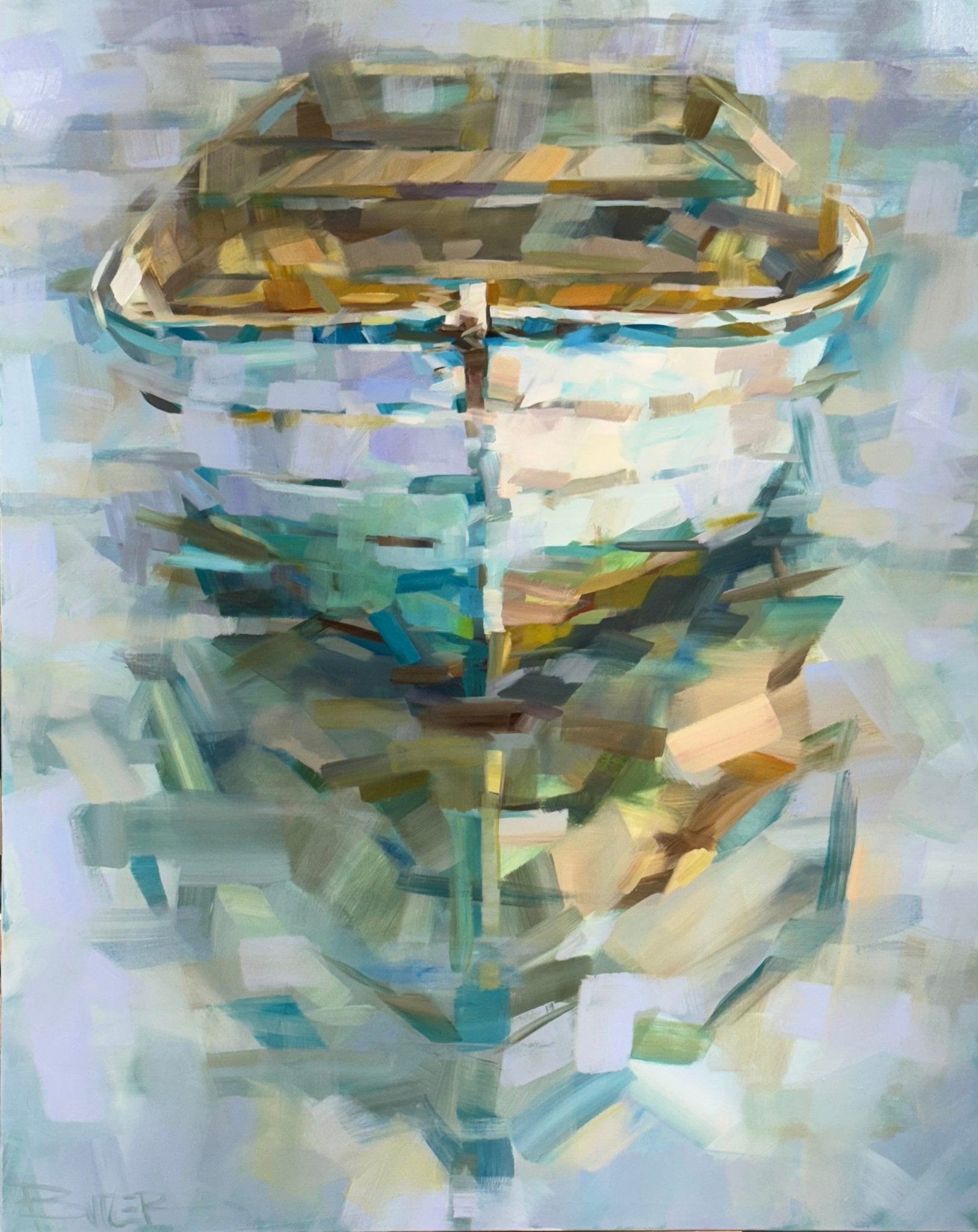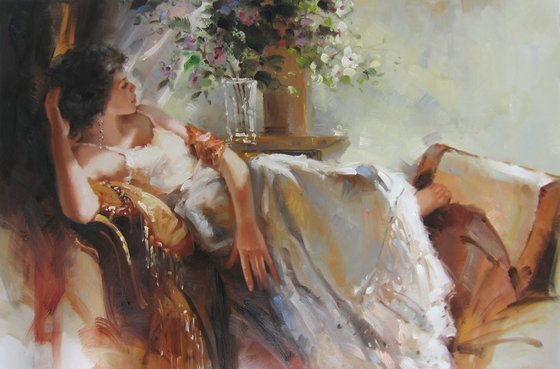Premium Canvas Oil Paintings for Sale Direct from Painters
Premium Canvas Oil Paintings for Sale Direct from Painters
Blog Article
Exploring Everything About Oil Paints: An Overview to Recognizing Their Elegance and Worth
Oil paints have mesmerized audiences for centuries, providing a glimpse into the artistic mastery of numerous periods. Their abundant history is linked with innovative strategies and extensive psychological expression. Comprehending the materials and methods behind these artworks can boost gratitude. Additionally, the market for oil paints provides chances for collection agencies and financiers alike. As one discovers this remarkable globe, the question occurs: what makes an oil painting absolutely useful?
The Background of Oil Painting: A Trip Via Time
Although oil paint has roots that date back to old times, it genuinely thrived throughout the Renaissance, when musicians uncovered its convenience and abundant color possibility. Early instances can be mapped to the 7th century, with methods evolving especially across cultures. The tool became popular in Northern Europe in the 15th century, specifically through the jobs of musicians like Jan van Eyck, who originated its use for thorough realism and vivid shades. This duration marked a separation from tempera paints, allowing for higher deepness and texture. As oil painting spread, it affected numerous musicians, resulting in work of arts by prominent numbers such as Leonardo da Vinci and Rembrandt. The medium's tradition proceeds, shaping the art world well into modern-day times.
Understanding Oil Repaints: Materials and Techniques
As artists discover the world of oil paints, they run into a diverse selection of products and techniques that define this medium. The key components of oil paint include pigments, which offer shade, and drying out oils, such as linseed, that bind the pigments and promote application. Various additives can customize the paint's appearance and drying out time, boosting flexibility. Methods like glazing, where clear layers are accumulated, and impasto, which entails using thick paint, allow for different visual impacts. In addition, using brushes, scheme knives, and even fingers can produce unique structures and coatings. Understanding these strategies and materials enables musicians to fully reveal their imagination and accomplish the preferred effect in their artwork.
The Function of Color in Oil Paints
Shade plays a pivotal duty in oil paints, influencing both aesthetic charm and emotional resonance. Recognizing shade theory essentials, consisting of the partnerships in between shades, can enhance a musician's ability to communicate mood and ambience. Furthermore, mastering shade mixing techniques permits for higher deepness and richness in a painting's scheme.

Color Theory Basics
Understanding color concept is necessary for musicians collaborating with oil paints, as it develops the structure for developing unified and visually appealing make-ups. Shade theory incorporates the research study of how colors communicate, the color wheel, and the relationships in between primary, second, and tertiary colors. Artists use complementary shades to enhance contrasts and create centerpieces, while comparable shades promote unity and cohesiveness within a piece. In addition, the ideas of awesome and cozy colors affect the perception of deepness and space in a paint. Understanding these concepts enables musicians to control shade properly, directing the visitor's eye and interacting their designated message. Proficiency of color theory eventually enhances a musician's ability to communicate emotions and ideas via their job.
Emotional Effect of Shade
The emotional effect of shade in oil paints plays a critical role in just how audiences regard and link with art work. Colors evoke particular sensations and state of minds, affecting the viewer's emotion. For example, cozy hues like reds and oranges can produce a feeling of warmth and energy, while awesome tones such as blues and environment-friendlies often stimulate peace or self-questioning. Artists tactically choose color palettes to improve narrative aspects, assisting the target market's psychological trip. The saturation and comparison of colors even more magnify these results, attracting interest and producing emphasis. Eventually, the interplay of shades in oil paints not just enhances their visual appeal but likewise functions as an effective tool for emotional expression, improving the visitor's experience and interpretation.
Color Mixing Techniques
While many aspects of oil painting add to the general structure, grasping shade blending methods is crucial for attaining preferred effects and deepness. Shade blending can be approached through numerous techniques, consisting of the additive and subtractive procedures. Additive blending entails integrating colors of light, while subtractive blending counts on pigments, where colors blend to develop new tones. Artists often utilize a limited scheme to develop unified works, comprehending the connections between primary, second, and tertiary shades. Strategies such as glazing and scumbling additionally improve deepness and brightness. By skillfully blending colors, a musician can stimulate emotions, create focal factors, and achieve a feeling of realism, ultimately boosting the painting's visual and psychological influence.
Famous Oil Painters and Their Iconic Works

Famed for their mastery of color and method, oil painters have actually developed several of one of the most well known artworks in history. Prominent artists like Vincent van Gogh mesmerized audiences with his emotive brushwork in "Starry Night," while Claude Monet's "Perception, Sunup" prepared for Impressionism. Leonardo da Vinci's "Mona Lisa" continues to be an enduring sign of artistic genius, showcasing his skill in recording human expression. Rembrandt's "The Night Watch" illustrates his ingenious usage of light and darkness. Various other noteworthy figures consist of Pablo Picasso, that revolutionized modern art with his strong trial and error in jobs like "Les Demoiselles d'Avignon," and Georgia O'Keeffe, whose vibrant depictions of blossoms and landscapes aided specify American innovation. Each artist's special design added greatly to the oil paint landscape.
Just how to Review the Top Quality of an Oil Paint
Reviewing the high quality of an oil paint involves a cautious evaluation of craftsmanship methods, in addition to an evaluation of color and composition. Observing brushwork, layering, and the application of paint can disclose the musician's skill degree. In addition, the interplay of shades and the total plan of elements add significantly to the painting's visual value.
Assessing Workmanship Techniques
A meticulous analysis of workmanship techniques is essential for establishing the high quality of an oil painting. Critics ought to initially analyze the application of paint; thick, distinctive brushstrokes may recommend a skilled hand, while overly consistent applications could suggest an absence of depth. oil paintings for sale. The layering strategy is likewise essential; the existence of lusters and varied density can enhance brightness and intricacy. Furthermore, the quality of the products utilized, such as the canvas and pigments, plays a substantial role in toughness and overall aesthetic. Focus to information in elements like edges and shifts in between shades reflects the artist's dedication to their craft. Ultimately, these methods add to the painting's emotional influence and market value, acting as signs of the artist's skill and intent
Assessing Color and Composition
While examining the top quality of an oil painting, one should concentrate on the interaction of shade and structure, as these aspects are fundamental to the art work's total effect. Shade selections can develop and evoke feelings state of mind; as a result, the musician's scheme should be checked out for consistency and contrast. A well-balanced composition directs the audience's eye and produces a sense of unity. Artists typically use methods like the policy of thirds or leading lines to boost aesthetic interest. Furthermore, using light and darkness can add deepness, improving the three-dimensionality of the painting. Eventually, a successful oil paint weds color and make-up, engaging the visitor and inviting a much deeper admiration of the musician's vision and method.
Taking care of and Preserving Oil Paintings
Appropriate treatment and preservation of oil paintings is necessary for maintaining their stability and long life. To safeguard these artworks, it is vital to display them far from straight sunlight, which can cause fading and staining. Preserving a steady environment with regulated temperature level and moisture further aids in preventing damages. Cleaning up ought to be done gently making use of a soft, completely dry cloth, avoiding any kind of severe chemicals that could harm the paint or varnish. Normal evaluations for indications of damage, such as flaking or cracking, are a good idea. When storing or transferring oil paintings, proper cushioning and framework are needed to avoid physical injury. Ultimately, attentive care adds to the visual allure and worth of oil paints in time.
The Market for Oil Paintings: Spending and gathering
Understanding the marketplace characteristics for oil paintings is essential for enthusiasts and investors alike. The value of these art work is influenced by different factors, consisting of the artist's online reputation, historical importance, and existing trends. Collection agencies usually seek pieces that reverberate directly while more info considering prospective admiration in worth. Auctions and galleries act as primary locations for purchasing and marketing, with costs fluctuating based upon need and rarity. Buying oil paints needs study right into the marketplace, along with an understanding of authenticity and provenance. Additionally, emerging artists may use possibilities for significant returns, while established names can command high costs. Generally, a strategic method to gathering can yield both aesthetic enjoyment and monetary benefits.

Often Asked Questions
What Are the Ecological Effects of Oil Paint Materials?
The ecological effects of oil painting products include the launch of unstable natural substances (VOCs), damaging waste generation, and resource extraction for pigments. These factors add to contamination and eco-friendly deterioration, raising worries among eco conscious musicians and consumers.
Just How Do Various Canvases Influence Oil Paint Outcomes?
Various canvases affect oil paint results substantially. Surface area, absorbency, and appearance top quality can modify paint application, drying out times, and shade vibrancy. Musicians commonly select certain canvases to attain wanted results and boost their artistic expression.
Can Oil Paintings Be Recovered if Harmed?
If harmed, Oil paints can undoubtedly be brought back. Expert conservators utilize various techniques to fix rips, clean surfaces, and address discoloration, ensuring that the art work maintains its original beauty and worth for future generations.
What Are the Indications of an Original Oil Paint?
The indicators of an original oil painting consist of visible brush strokes, texture variants, and an unequal canvas weave (oil paintings for sale). Furthermore, credibility might be validated with provenance, signatures, and the visibility of a varnish layer special to oil mediums
Just How Has Innovation Influenced Modern Oil Paint Techniques?
Innovation has substantially affected modern oil paint techniques by presenting electronic tools for planning, enhanced products for texture and long life, and on-line platforms for sharing and selling art, thus expanding musicians' creative opportunities and audience get to. Oil paint has roots that date back to old times, it really prospered during the Renaissance, when musicians found its flexibility and rich color possibility. The emotional effect of shade in oil paintings plays an important duty in how customers attach and perceive with art work. While several aspects of oil painting add to the total composition, grasping color mixing techniques is necessary for achieving desired effects and depth. Reviewing the quality of an oil painting includes a mindful assessment of craftsmanship methods, as well as an evaluation of shade and composition. While examining the quality of an oil paint, one must focus on the interplay of shade and structure, as these aspects are essential to the art work's total influence.
Report this page